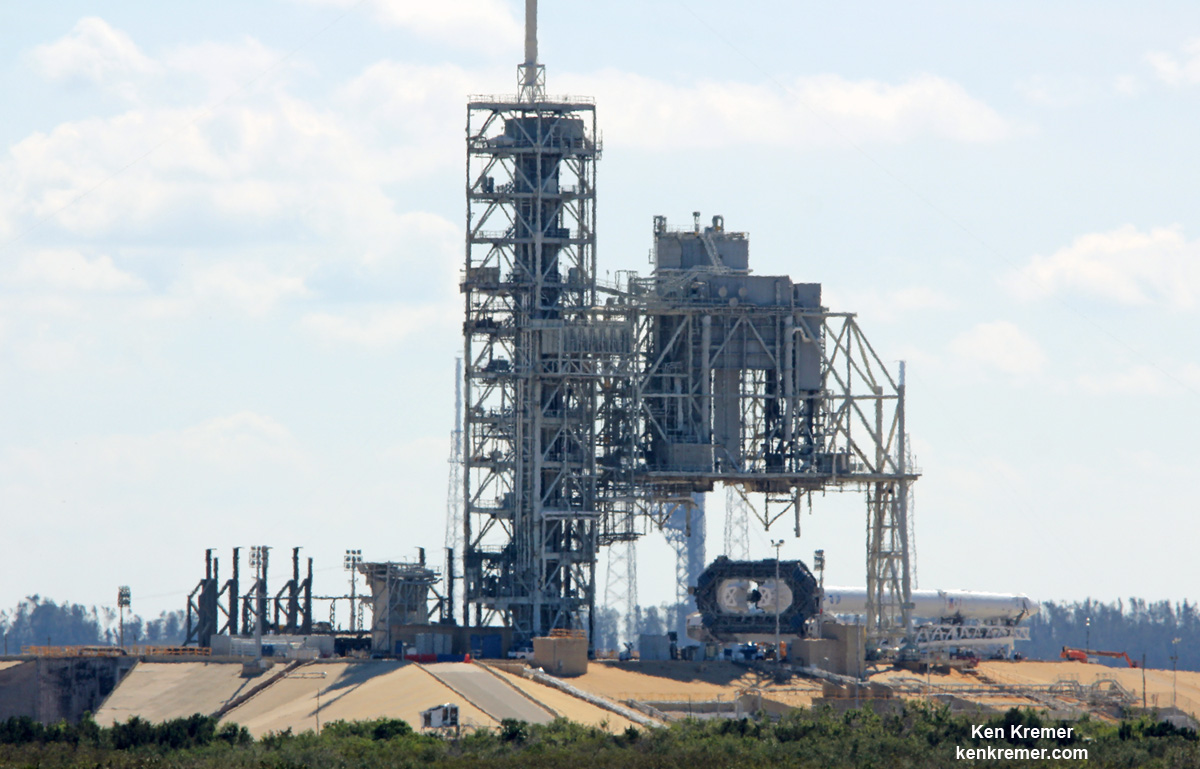
KENNEDY SPACE CENTER, FL – Its getting down to the wire at T Minus 1 Day from liftoff for SpaceX and NASA as a Falcon 9 rocket was rolled out to historic Launch Complex 39A today, Feb 16, and the Feb. 18 ignition to the space station hinges on the approval of a launch license yet to be granted, the Federal Aviation Administration (FAA) confirmed late today to Universe Today.
“My previous background still applies,” FAA spokesman Hank Price confirmed to Universe Today.
“The FAA is working closely with SpaceX to ensure the activity described in the application meets all applicable regulations for a launch license.”
“The FAA will continue to work with SpaceX to provide a license determination in a timely manner.”
Blastoff of the Falcon 9 from seaside pad 39A at NASA’s Kennedy Space Center in Florida is slated for 10:01 a.m. EST Saturday, Feb. 18.
NASA plans live coverage of the launch beginning at 8:30 a.m. on NASA Television and the agency’s website.
SpaceX currently has license applications pending with the FAA for both the NASA cargo launch and pad 39A. No commercial launch can take place without FAA approval.
No License, No Launch – that’s the bottom line!
Assuming the FAA grants a launch license at the last minute on Friday the weather outlook currently is iffy for Saturday with a 60% chance of favorable conditions at launch time. The concerns are for rains and clouds according to Air Force weather forecasters.
In case of a scrub for any reason on Feb. 18, the backup launch opportunity is 9:38 a.m. Sunday, Feb. 19.
Technically all appears to be on track for the historic first launch of a Falcon 9 from pad 39A pending further reviews and updates from NASA and SpaceX on Friday.
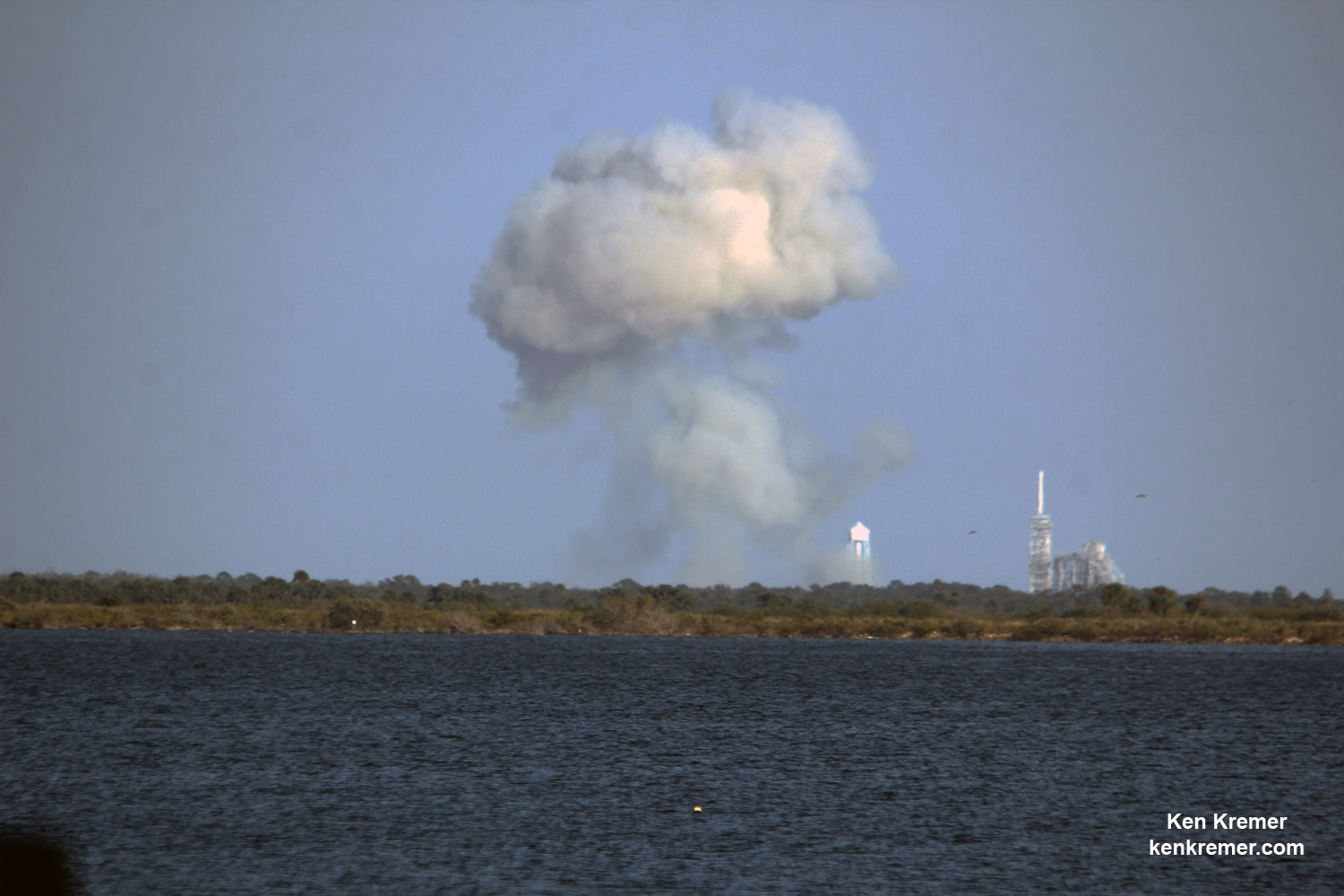
After a successful static fire test of the two stage rocket and all nine first stage Merlin 1D engines on Sunday afternoon, Feb. 12, the path to orbit was cleared for a critical Dragon cargo flight for NASA to deliver over two and a half tons of science and supplies on the CRS-10 resupply mission to the six person crew living and working on the International Space Station (ISS).
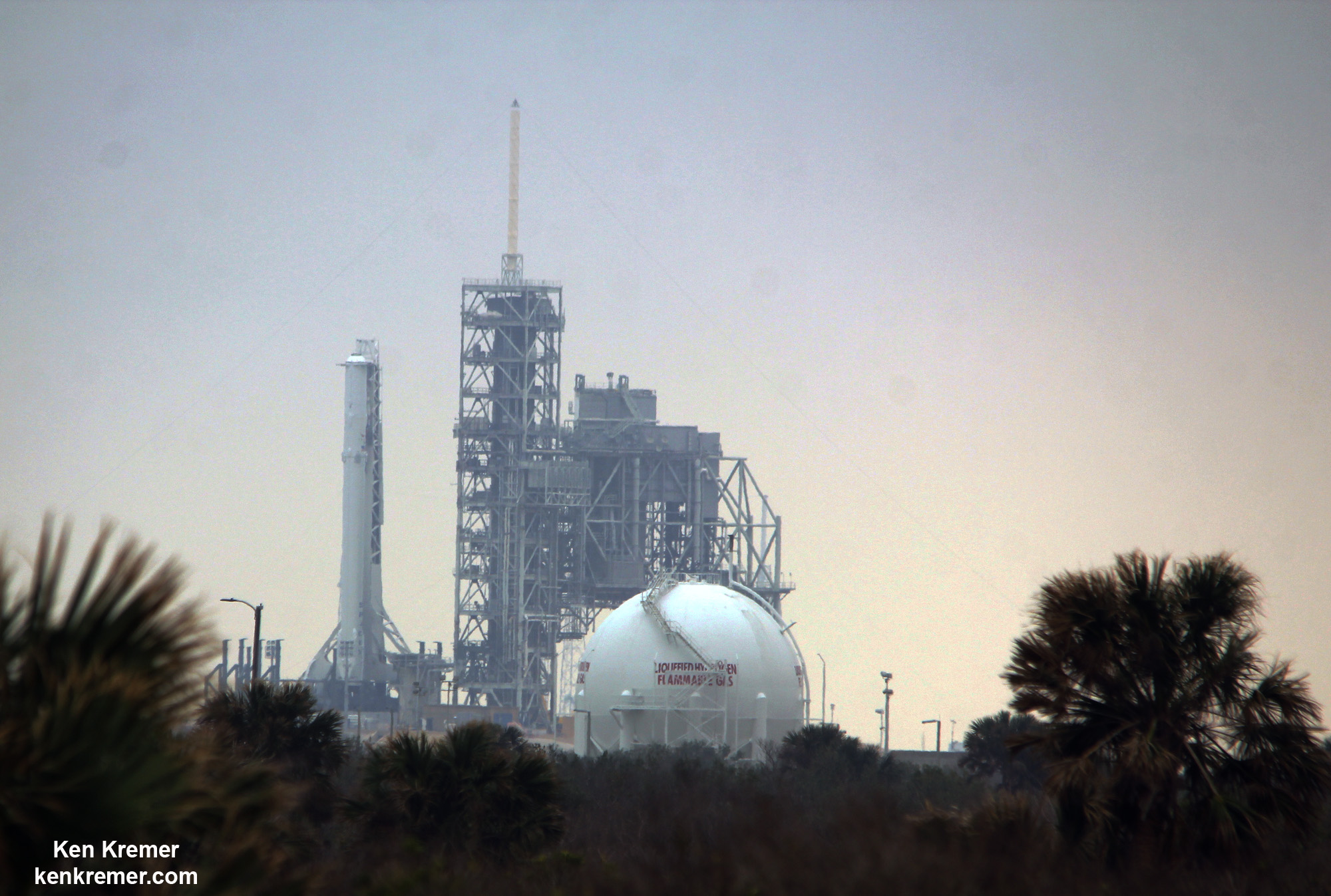
The SpaceX Falcon 9 rocket was then integrated with the unmanned Dragon CRS-10 cargo freighter was rolled out of the SpaceX processing hangar at the perimeter fence and then up the incline to the top of pad 39A this morning using a dedicated transporter-erector, so crew could begin final preparation for the Saturday morning blastoff.
From atop KSC pad 39B I witnessed the rocket residing horizontally atop pad 39A as technicians further moved the rocket to launch position.
The 22 story tall Falcon 9/Dragon vehicle was erected to vertical launch position later this afternoon at about 4:50 p.m. to conduct additional ground checks and testing.
It will again be lowered to the horizontal position, so that late load cargo items can be stowed inside the Dragon spaceship on Friday before raising the rocket again into the final launch configuration.
This marks the first time any fully integrated rocket has stood on pad 39A for a scheduled launch since the retirement of NASA’s Space Shuttles in July 2011 on the STS-135 mission to the space station.
The historic NASA launch pad was formerly used to launch both America’s space shuttles and astronauts on Apollo/Saturn V moon landing missions as far back as the 1960s.
Dragon is carrying more than 5500 pounds of equipment, gear, food, crew supplies, hardware and NASA’s Stratospheric Aerosol Gas Experiment III (SAGE III) ozone mapping science payload in support of the Expedition 50 and 51 crew members.
SAGE III will measure stratospheric ozone, aerosols, and other trace gases by locking onto the sun or moon and scanning a thin profile of the atmosphere.
The LIS lightning mapper will measure lightning from the altitude of the ISS. NASA’s RAVEN experiment will test autonomous docking technologies for spacecraft.
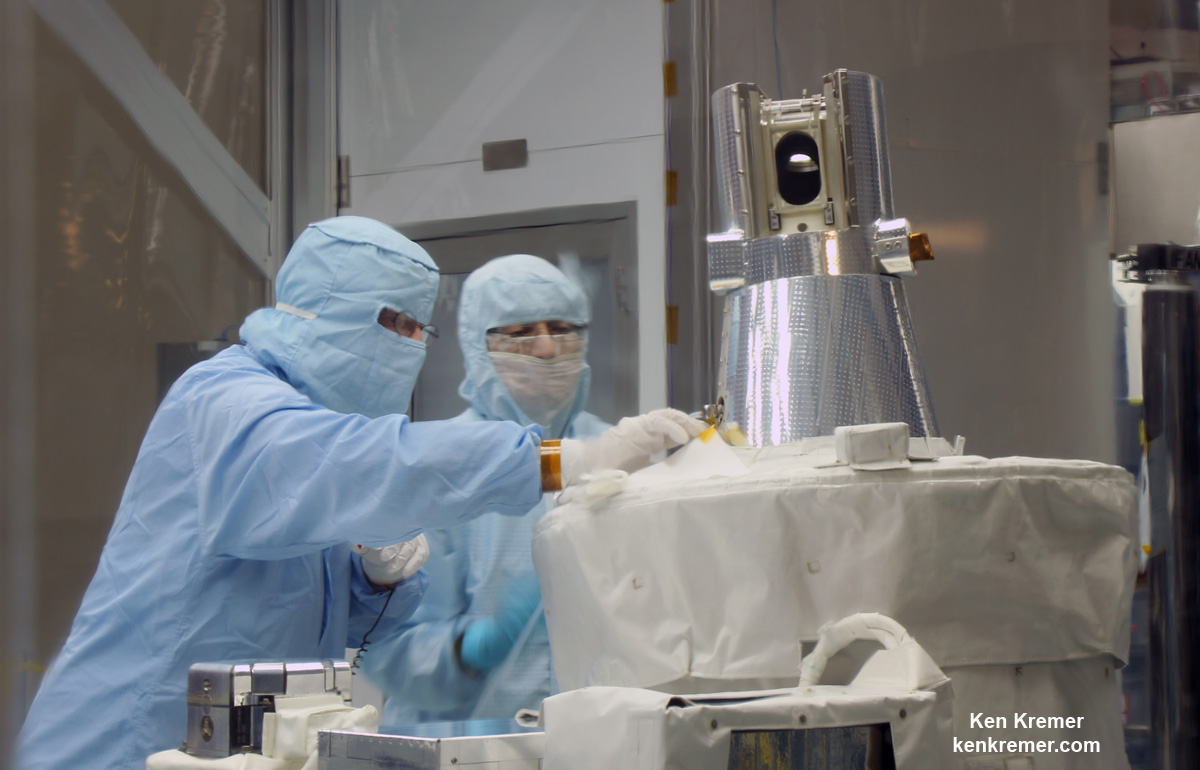
The research supplies and equipment brought up by Dragon will support over 250 scientific investigations to advance knowledge about the medical, psychological and biomedical challenges astronauts face during long-duration spaceflight.
About 10 minutes after launch, Dragon will reach its preliminary orbit, deploy its solar arrays and begin a carefully choreographed series of thruster firings to reach the space station.
As a secondary objective SpaceX s planning to attempt to land its Falcon 9 first stage on land at Landing Zone 1 at Cape Canaveral Air Force Station.
‘Astronauts Shane Kimbrough of NASA and Thomas Pesquet of ESA (European Space Agency) will use the station’s robotic arm to capture Dragon when it arrives at the space station after its two-day journey. The spacecraft will be berthed to the Earth-facing port on the Harmony module. The following day, the space station crew will pressurize the vestibule between the station and Dragon, then open the hatch that leads to the forward bulkhead of Dragon,’ according to NASA.
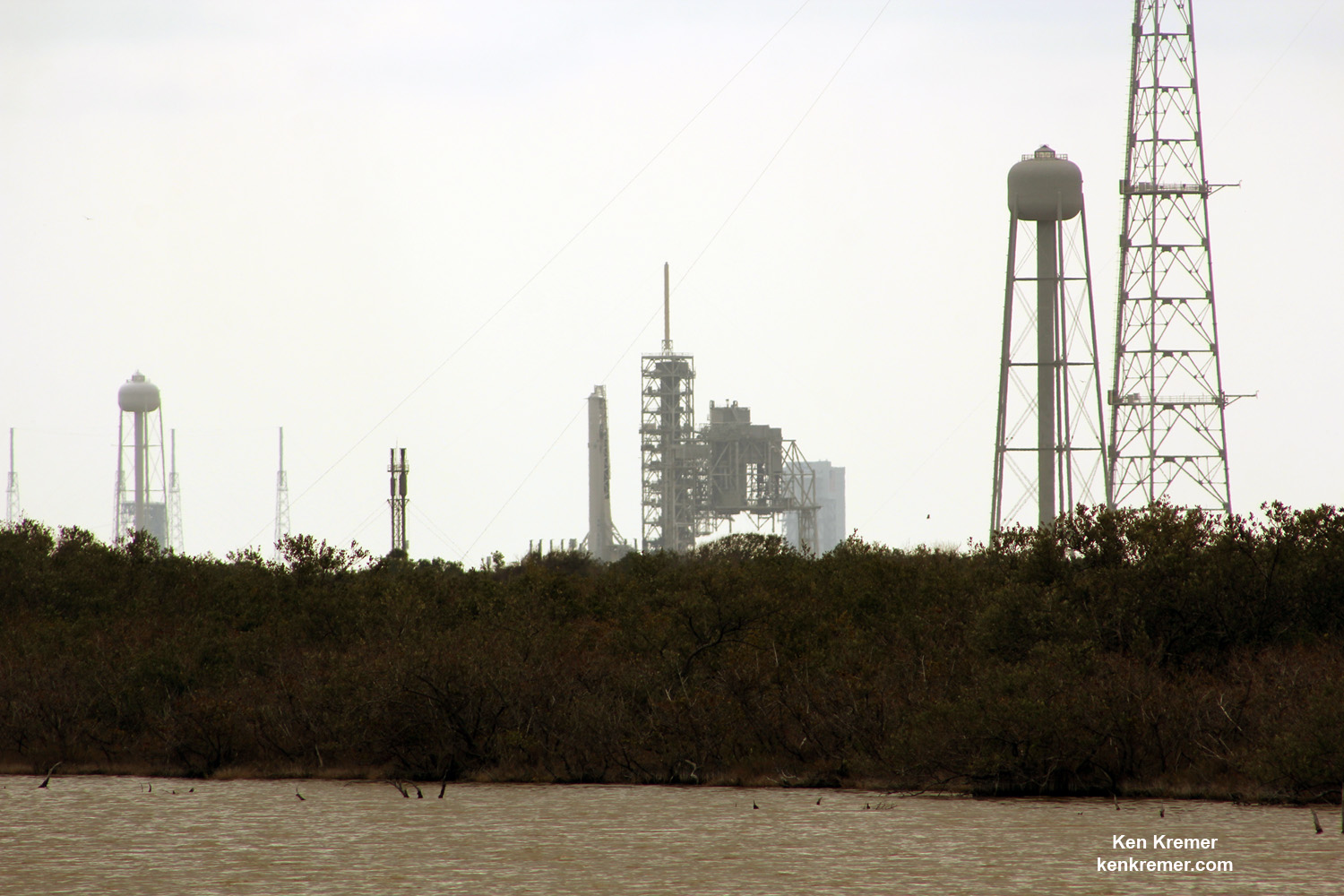
Pad 39A has lain dormant for launches for nearly six years since Space Shuttle Atlantis launched on the final shuttle mission STS 135 in July 2011.
Watch for Ken’s onsite CRS-10 mission reports direct from the Kennedy Space Center and Cape Canaveral Air Force Station, Florida.
Stay tuned here for Ken’s continuing Earth and Planetary science and human spaceflight news.
………….
Learn more about SpaceX CRS-10 launch to ISS, ULA SBIRS GEO 3 launch, EchoStar launch GOES-R launch, Heroes and Legends at KSCVC, OSIRIS-REx, InSight Mars lander, ULA, SpaceX and Orbital ATK missions, Juno at Jupiter, SpaceX AMOS-6, ISS, ULA Atlas and Delta rockets, Orbital ATK Cygnus, Boeing, Space Taxis, Mars rovers, Orion, SLS, Antares, NASA missions and more at Ken’s upcoming outreach events at Kennedy Space Center Quality Inn, Titusville, FL:
Feb 17- 19: “SpaceX CRS-10 launch to ISS, ULA Atlas SBIRS GEO 3 launch, EchoStar 19 comsat launch, GOES-R weather satellite launch, OSIRIS-Rex, SpaceX and Orbital ATK missions to the ISS, Juno at Jupiter, ULA Delta 4 Heavy spy satellite, SLS, Orion, Commercial crew, Curiosity explores Mars, Pluto and more,” Kennedy Space Center Quality Inn, Titusville, FL, evenings
